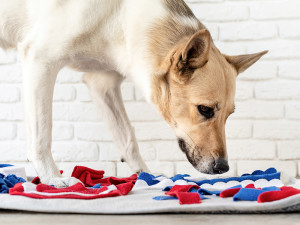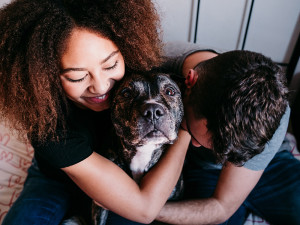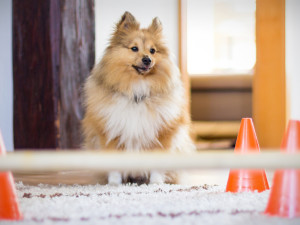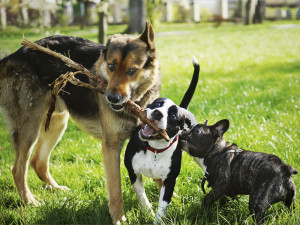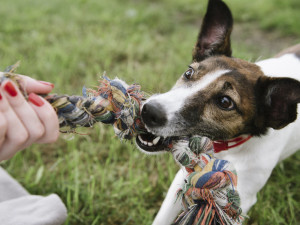The Do’s and Don’ts of Playing with Your Dog
Chase? Wrestle? Tug-o-war? Find out which are fair game.
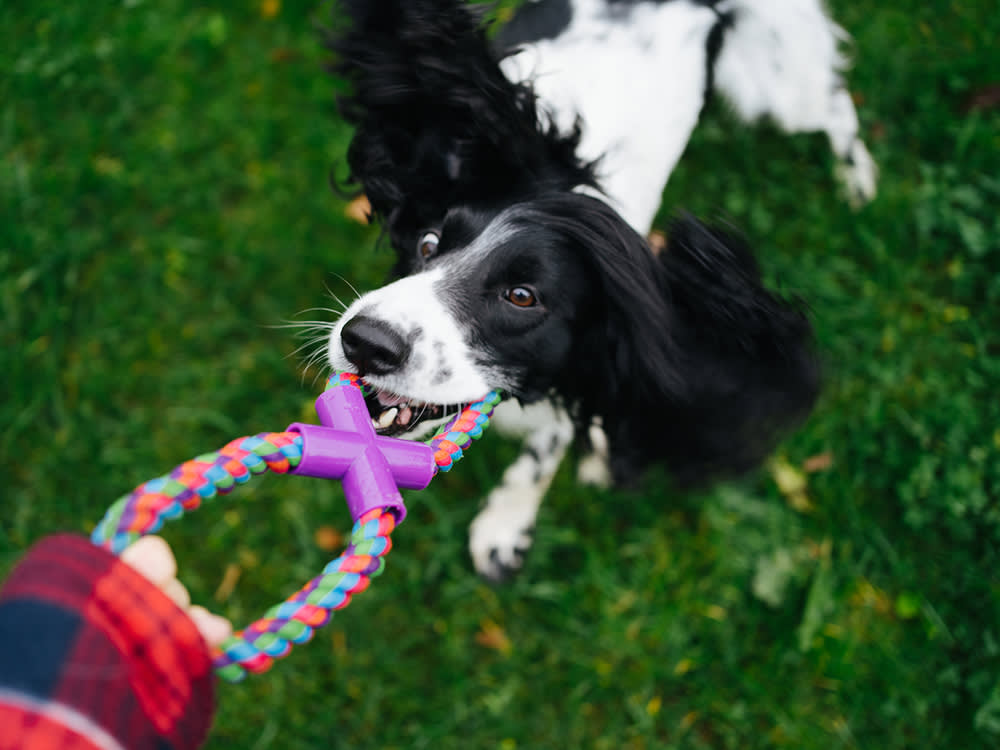
Share Article
When it comes to playing with dogs, many strong opinions exist — especially around what you shouldn’t do. While I agree with some of these prohibitions, there are three common dog play “don’ts” that are in fact myths. Below, let’s bust them one by one. Just remember to read to the end for the real “don’ts.”
Dog Play Dos
Busting the top 3 myths...
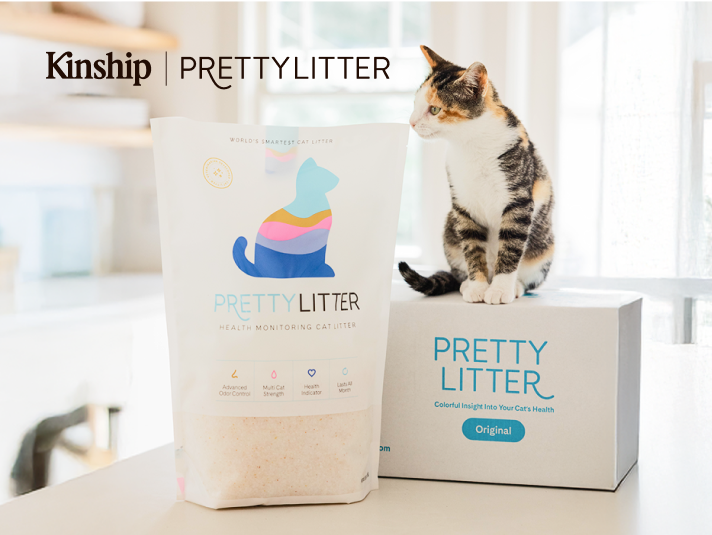
Save on the litter with color-changing tech that helps you better care for your cat.
Myth #1: Don’t mix dog training and play.
The Truth: It’s actually great to incorporate play into dog training sessions. The best dog training occurs when the dog views an activity as a game rather than a lesson. Using chase games to teach recalls, playing follow to build a base for heeling, using tug to practice “take it” and “drop it,” and practicing stays with “find it” games or hide-and-seek are all great ways to blend training and play. Additionally, play is reinforcing, so playing with your dog may be better than the best treat.
Myth #2: Only young dogs need to play.
The Truth: Dogs and people remain playful into adulthood, which may partially explain why we’ve been best friends for thousands of years. Many older dogs stop playing only because they no longer have buddies to play with. Keep playing with your dog well into old age. It’s part of what makes them dogs and us human.
Myth #3: Don’t play tug with your dog.
The Truth: Tug is a great game for most dogs, and they can learn a lot from playing it. Many trainers share this view and actually teach tug in puppy classes. The earlier dogs learn the lessons that tug has to offer — such as impulse control, mouth control and cooperation as well as skills like “take it” and “drop it” — the safer and more fun the game becomes.
For a long time, experts advised against playing tug with dogs for fear that it would create or increase aggressiveness in dogs. Later, tug was considered fine for most dogs as long as they were not allowed to “win” by keeping the toy at the end. The concern was that there would be bad consequences if a dog felt they had just triumphed over the person.
A scientific studyopens in new tab by Nicola Rooney and John Bradshaw addressed this issue. They found that “winning” the toy in a game of tug had no impact on the relationship between the human and dog. Based on their research, though, you should still be thoughtful about letting certain dogs keep the toy after a tug game. The most playful dogs in the study exhibited significantly higher amounts of playful attention-seeking behavior when they were allowed to “win.” Therefore, it may be better not to allow those dogs who become relentlessly pushy about seeking more play time to “win” at tug.
Of course, for a few dogs, tug is a bad idea. Dogs who are prone to aggression induced by high arousal are not good candidates for it. The same warning applies to dogs with poor bite inhibition or poor self-control as well as those who tend to creep up the toy with their mouths during tug. Additionally, it may exacerbate resource-guarding behavior in dogs who already exhibit it.
For most dogs though, tug has many benefits. It is interactive and requires cooperation between humans and dogs. It can give dogs exercise and help them stretch their bodies prior to other activities such as running or agility training. Tug can effectively rev up an agility dog for maximum success on the course. It helps many dogs learn better mouth control in general.
Dog Play Don’ts
1. Wrestling and teasing.
I stand by the ban on rough-and-tumble wrestle play between dogs and humans and the teasing that often accompanies it. Though wrestle play between dogs and humans can be fun, the high emotional arousal that results often leads to a lack of inhibition, and that’s when trouble can happen — even to nice dogs and nice people.
The reason: The play style used in wrestling is also used in serious fights and predation. Rough play is typically okay for play between dogs but can create real danger with people. When you (or your nephew or the little girl who lives next door) are down on the ground with your face next to an excited predator with dangerous weapons in their mouth, serious bites can happen, even if the dog has never bitten before. All too often, I’ve seen shocked and devastated families crying in my office, and I don’t want that to happen to you.
2. Chasing dogs.
I’m also opposed to people chasing dogs, preferring to let dogs chase people instead. If you chase your dog, you risk teaching your dog that moving toward them means the game is afoot, making them more likely to run away even when you approach them for another reason. This can ruin your dog’s recall.
Chasing your dog can also lead to injury if your dog charges away from you into the street or another unsafe area. There’s no denying that letting a person chase a dog can be a great reinforcement for the dog, but I only approve this game for dogs who are so well-trained that the person can stop the game at any time and successfully call the dog to come.
With so many “do’s and don’ts” on how to play with dogs, the most important may be this: Don’t spend so much time worrying about playing with your dog that you don’t actually play with them!

Karen B. London, PhD, CAAB, CPDT-KA
Karen B. London, Ph.D., is a Certified Applied Animal Behaviorist and Certified Professional Dog Trainer who specializes in working with dogs with serious behavioral issues, including aggression, and has also trained other animals including cats, birds, snakes, and insects.
Related articles
![Couple hugs their merle Boxer]()
How to Improve Your Relationship with Your Dog
Animal behaviorist Dr. Karen B. London on how to strengthen your pet-parent bond.
![Shetland sheepdog sits in front of a obstacle course for dogs in the living room]()
3 Fun Indoor Games to Play With Your Dog This Winter
Bad weather? These activities will keep your dog (and you!) from going stir crazy.
![Three dogs biting a stick.]()
Some Like It Rough: Playing Vs. Fighting
Two animal behavior experts agree it’s usually play fighting. Here’s how you can tell.
![A dog tugging on a toy outside]()
The Definitive Guide to Choosing Safe Dog Toys
Tips for pet parents who want their pups to have safe fun.
